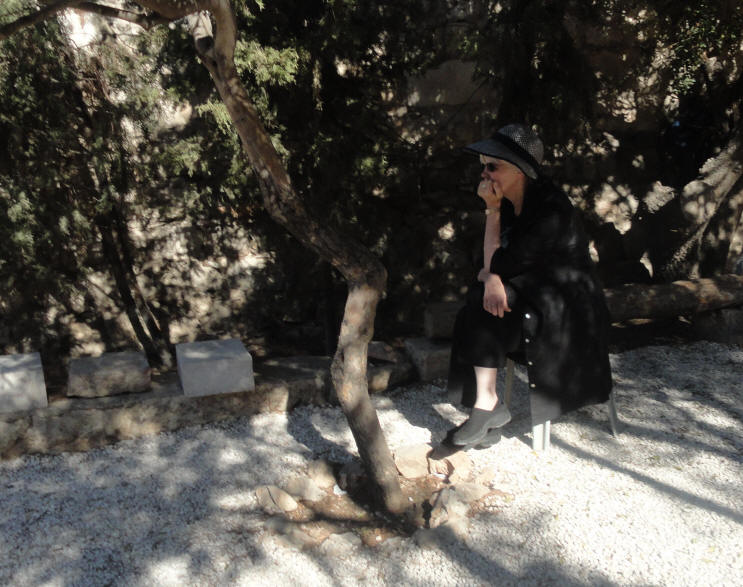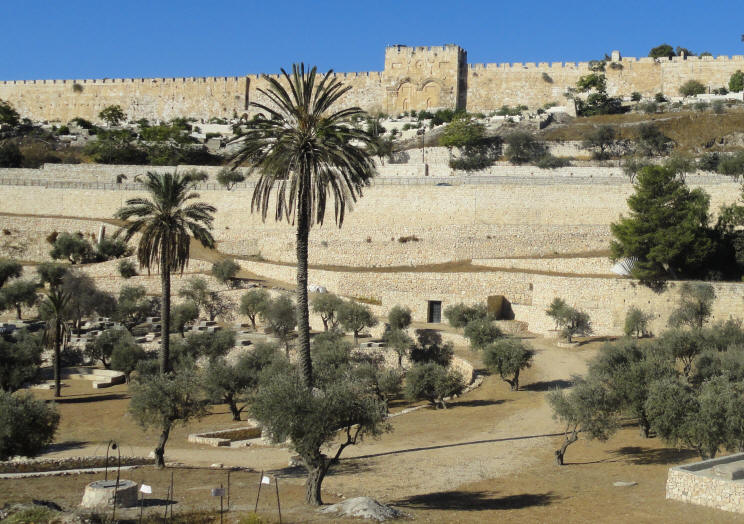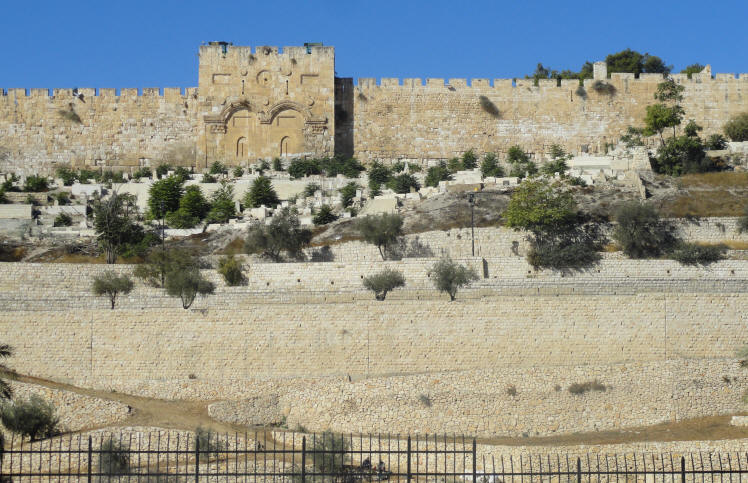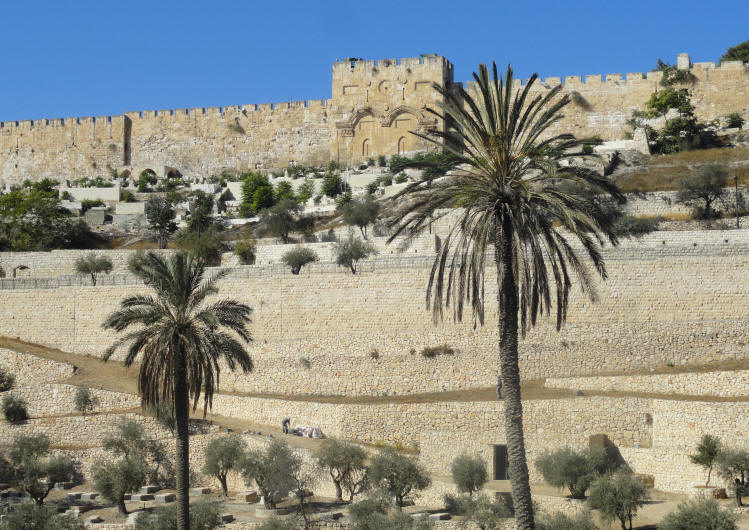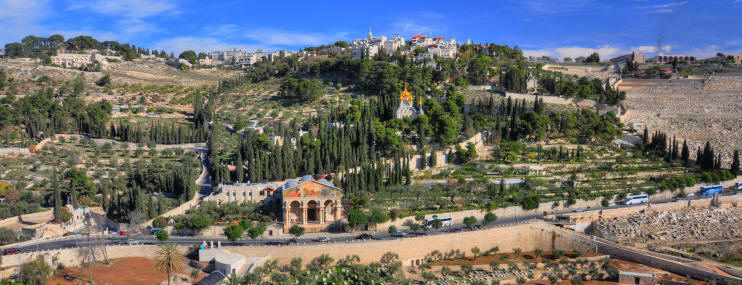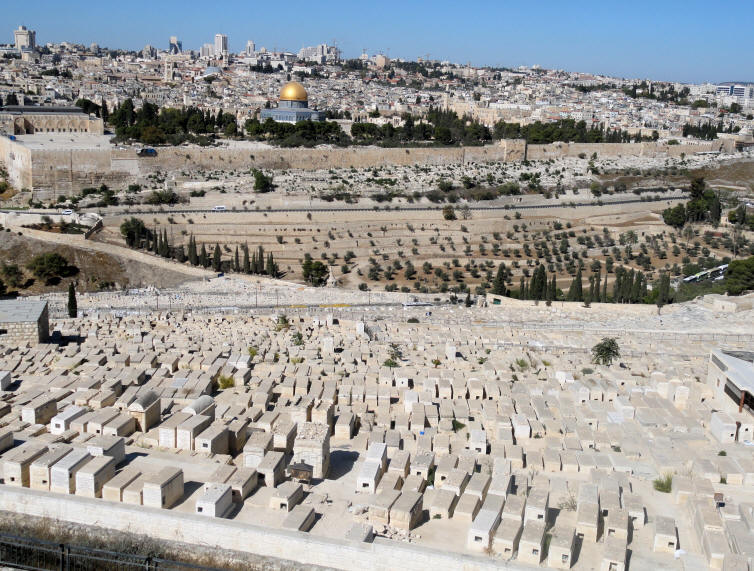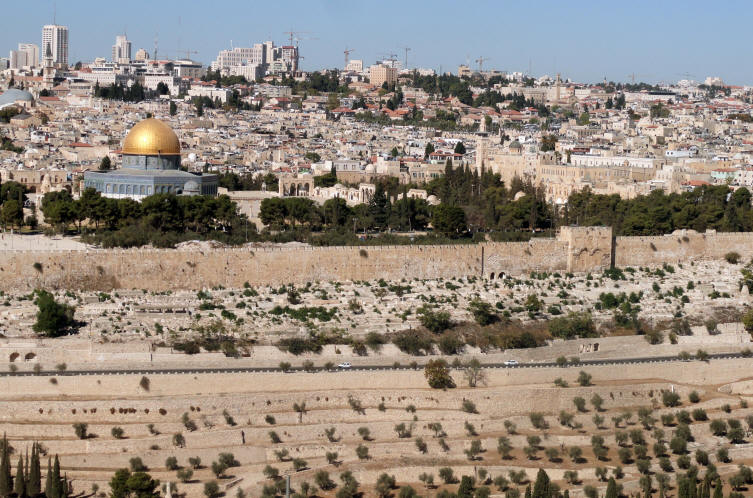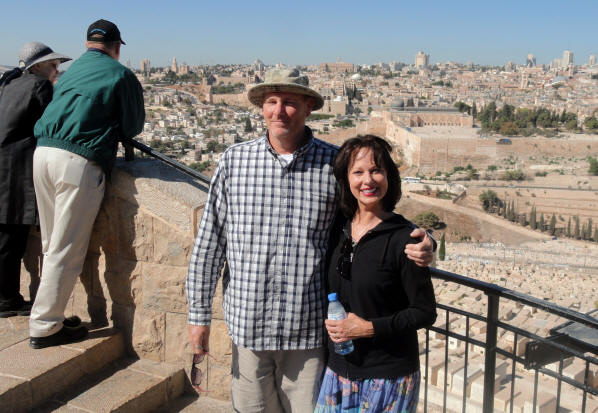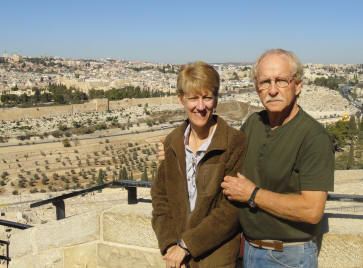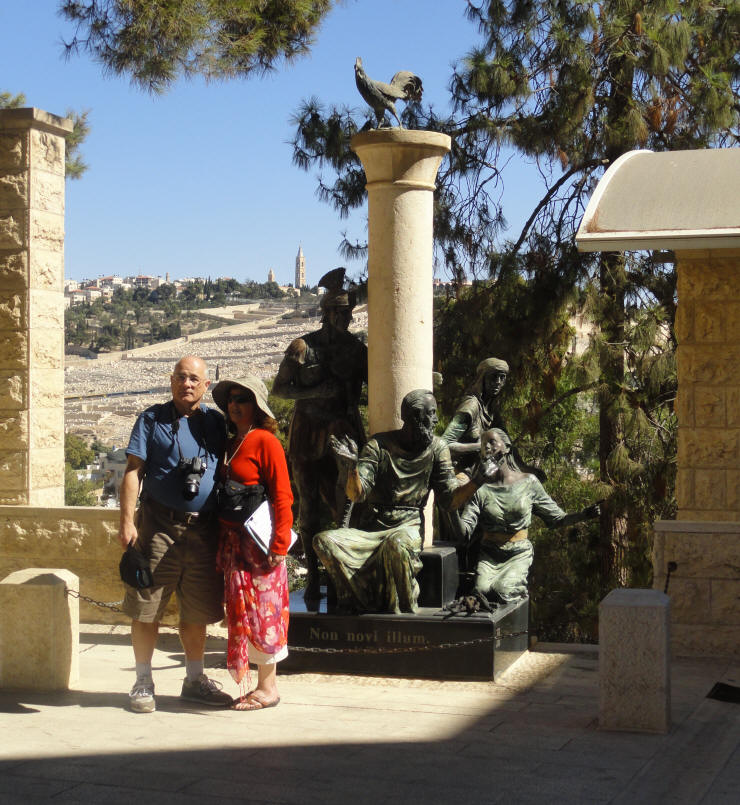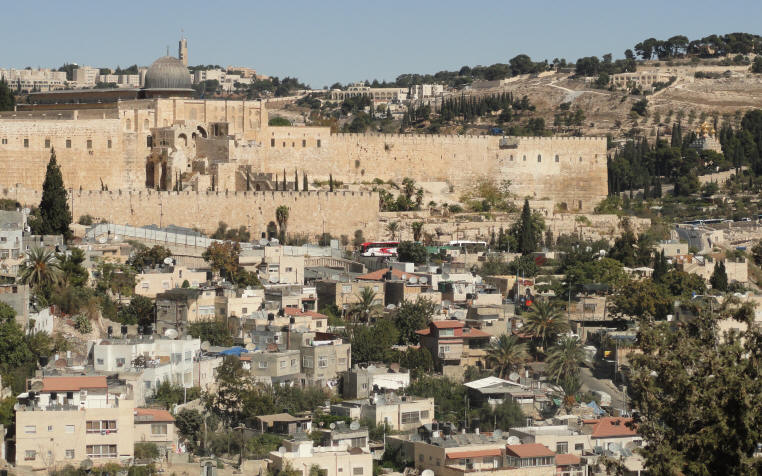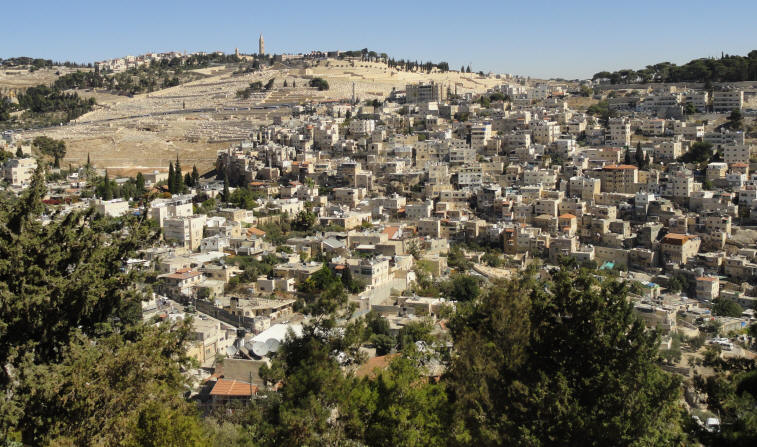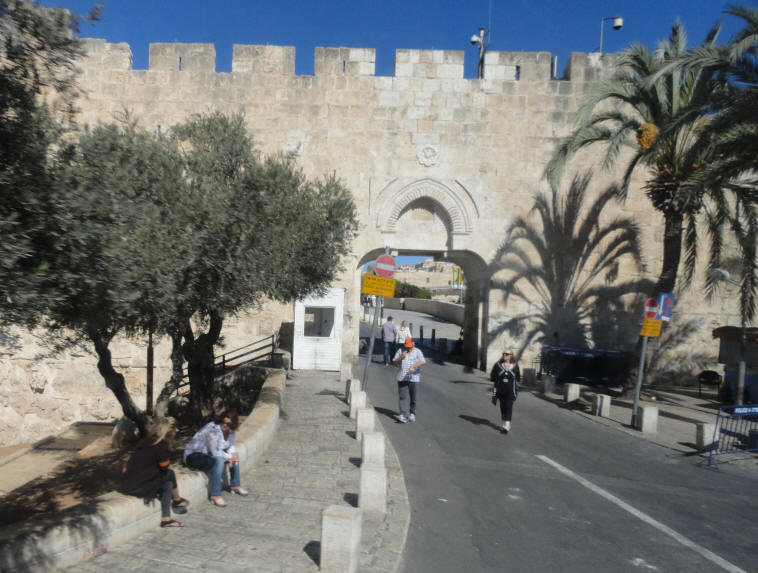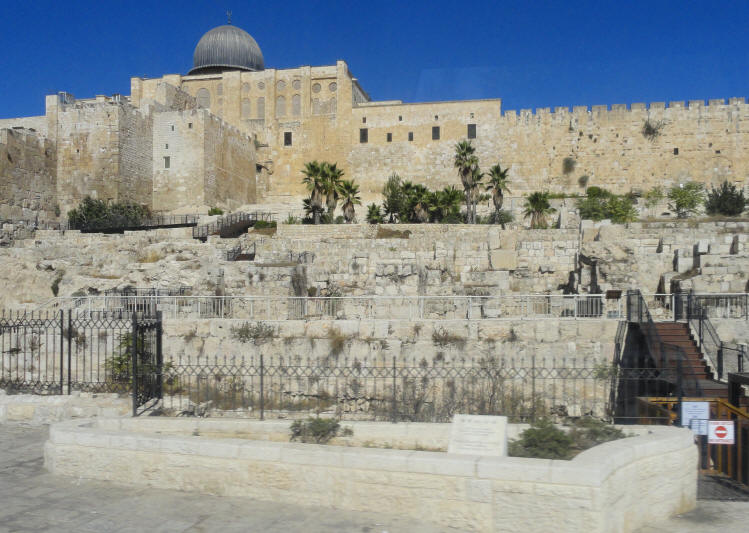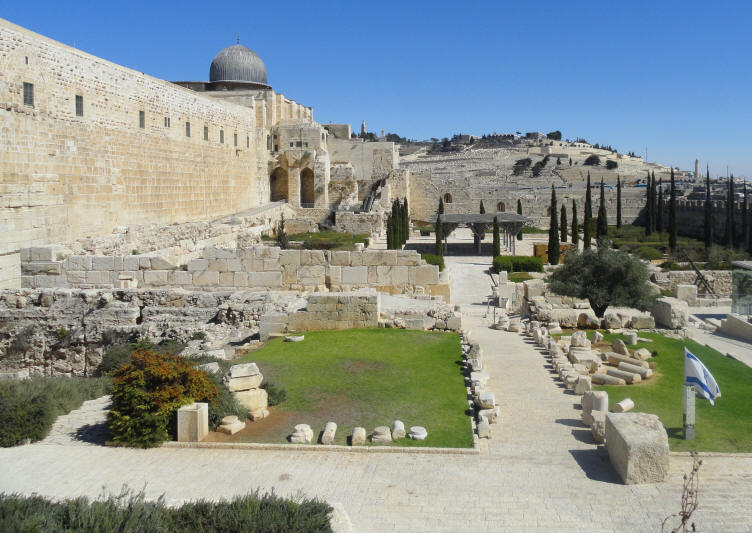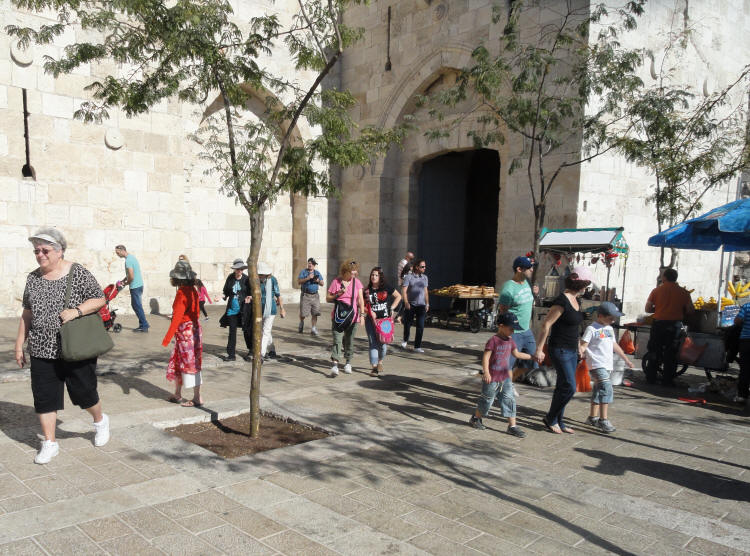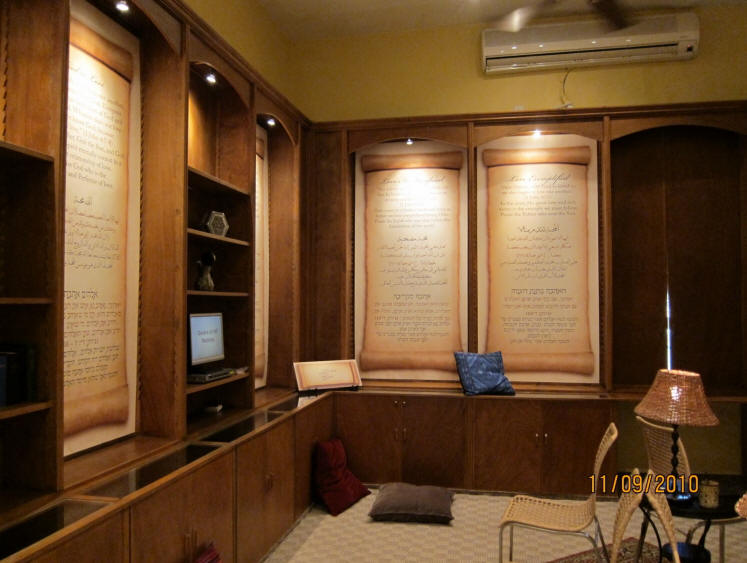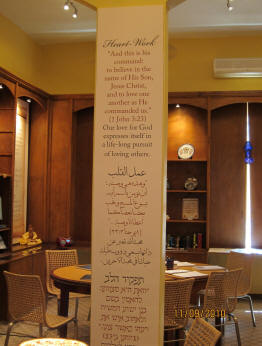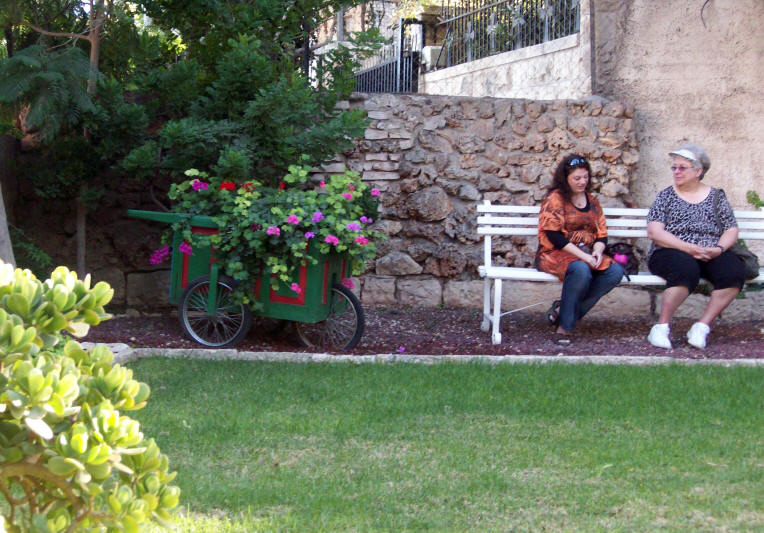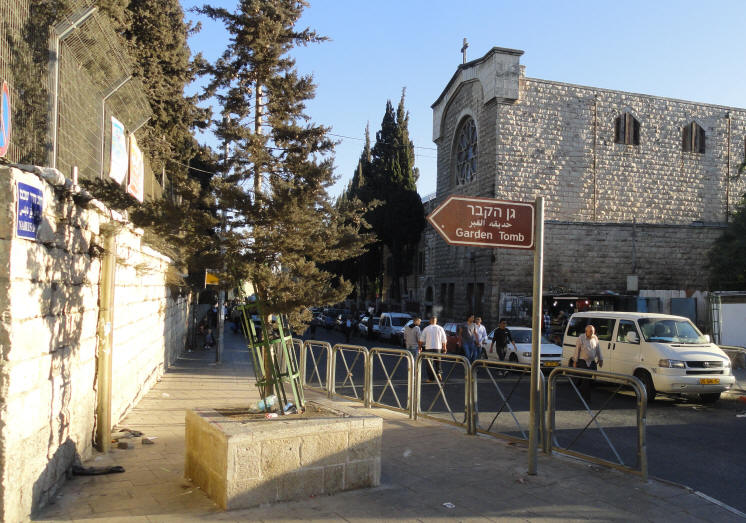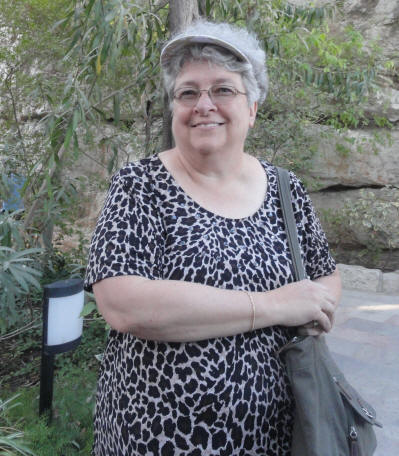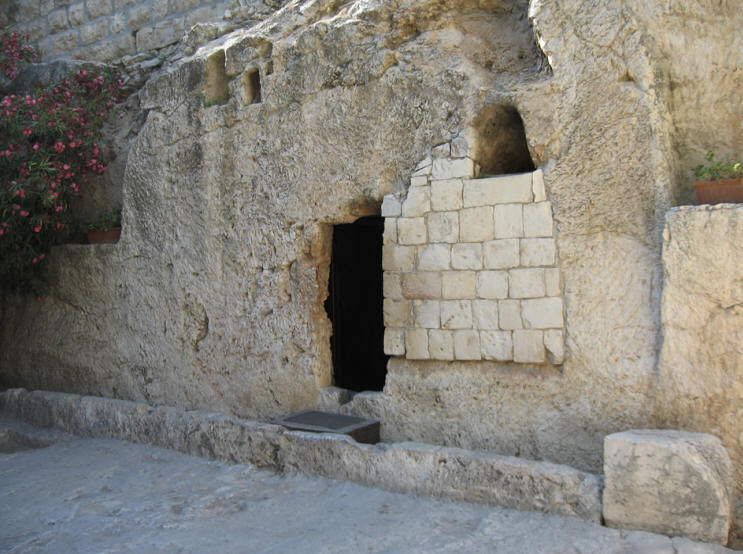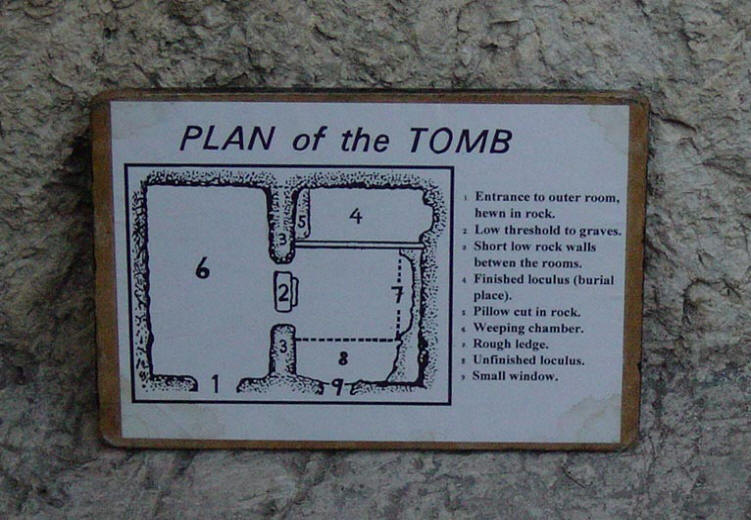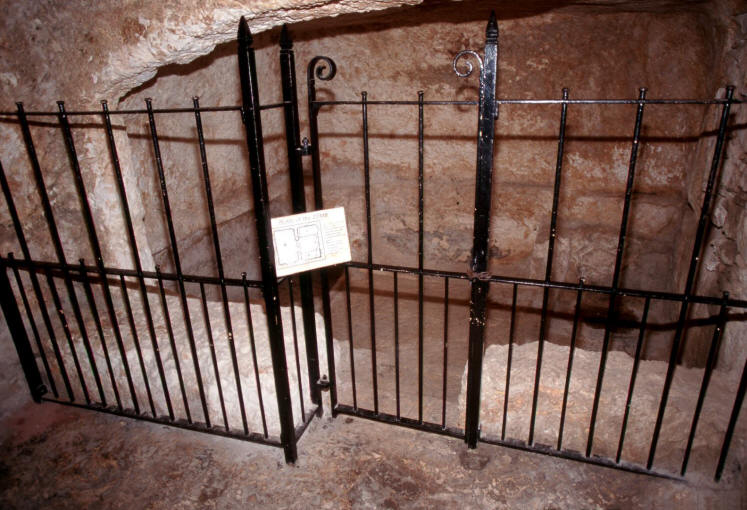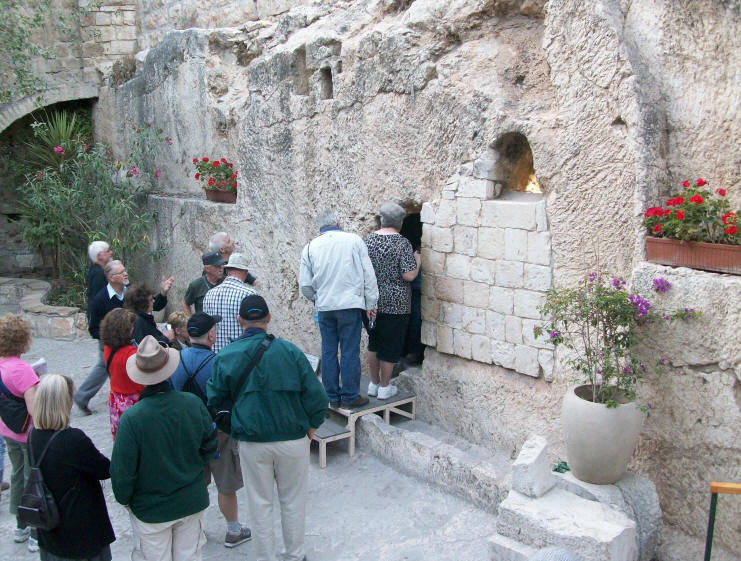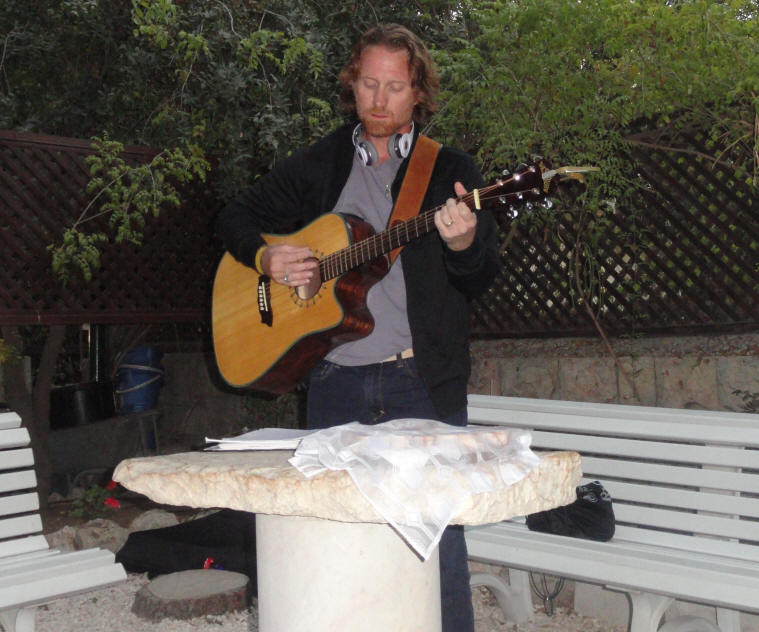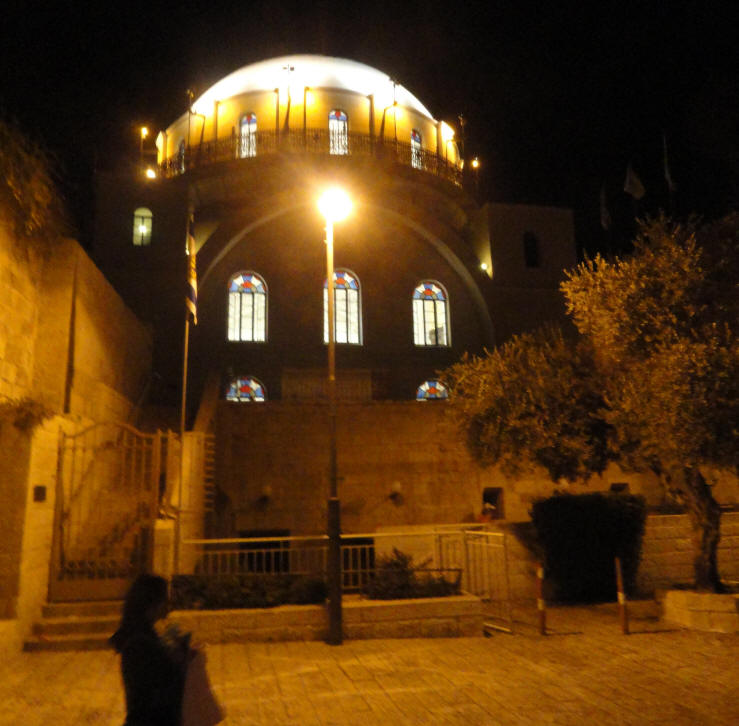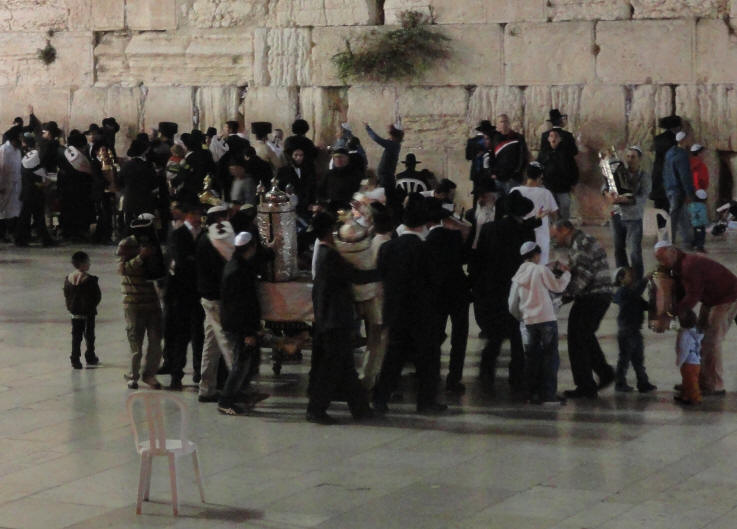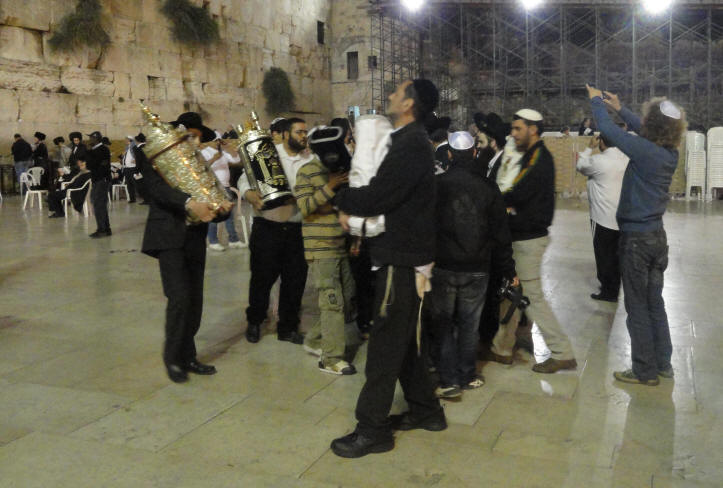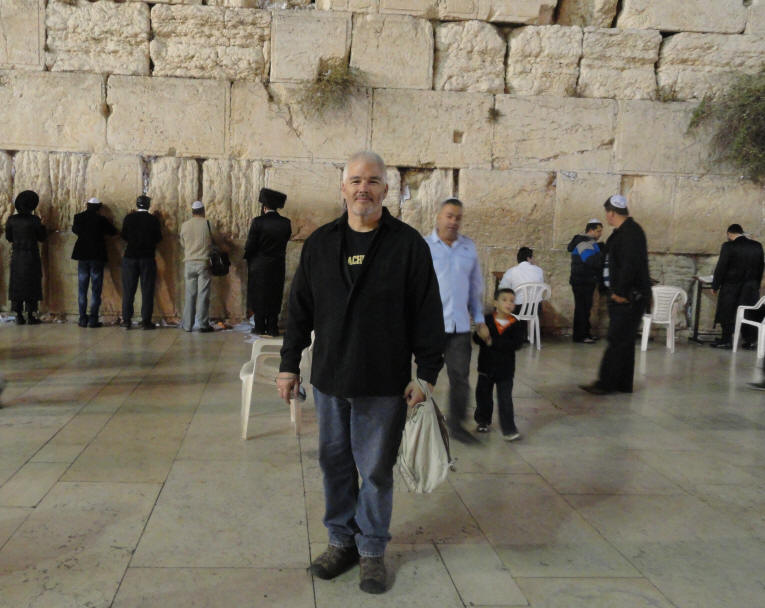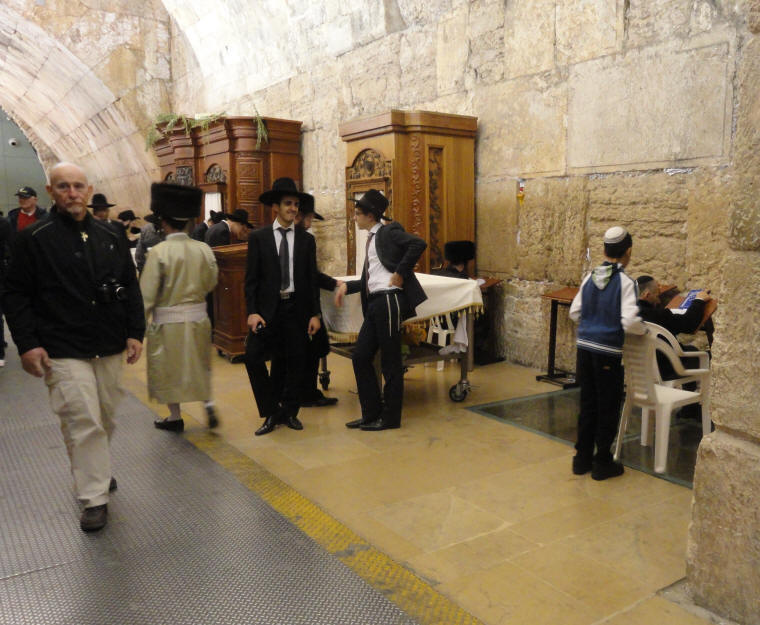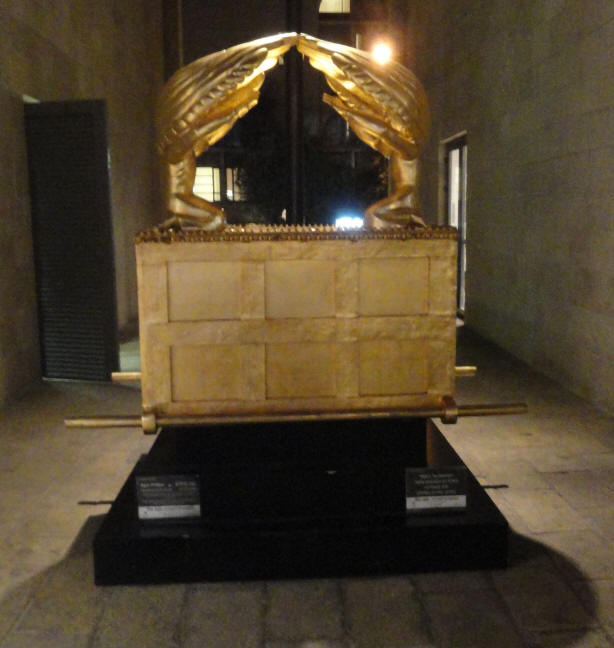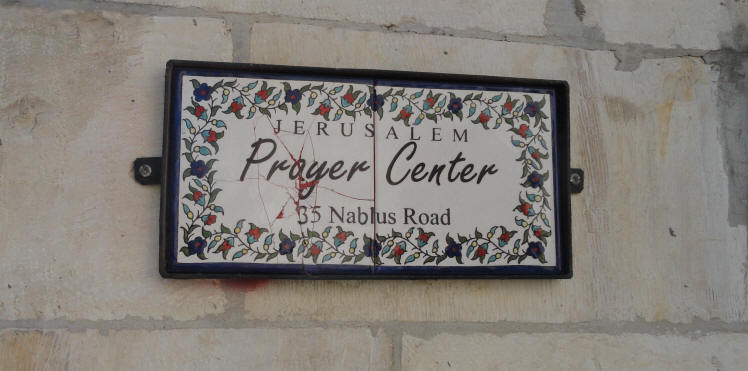
Beit Yeshua
Israel Trip
20 October 2011
Day 9
Home
DAY 1
12 October 2011
DAY 2
13 October 2011
DAY 3
14 October 2011
DAY4
15 October 2011
DAY 5
16 October 2011
DAY 6
17 October 2011
DAY 7
18 October 2011
DAY 8
19 October 2011
DAY 9
20 October 2011
The
Garden of
Gethsemane
Private Garden
The
Garden of
Gethsemane
& the Church
of All Nations
The Eastern
Gate
The Mount
Of Olives
St. Peter
Gallicantu
Touring Around
Jerusalem & the
Old City
Simchat Torah
More Walking
David's Citadel
The
Jerusalem
Prayer Center
The Garden
Tomb
The Old
City
at Night
The
Western Wall
at Simchat Torah
DAY 10
21 October 2011
DAY 11
22 October 2011
DAY 12
23 October 2011

The Eastern Gate in Jerusalem's Old City
Isaiah 62
6I have set watchmen upon thy walls, O Jerusalem, which shall never hold their peace day nor night:
ye that make mention of the LORD, keep not silence,
7And give him no rest, till he establish, and till he make Jerusalem a praise in the earth.Psalm 122:6 Pray for the peace of Jerusalem: may they prosper who love you.
Day 9
Day 9, like all the others, was a very busy day. We were up early and after breakfast, got in the bus to head down to the Garden of Gethsemane, then up to the top of the Mount of Olives, visited St. Peter Gallicantu & the Western Wall, stopped by the Jerusalem Prayer Center and walked over to the Garden Tomb, and topped the day off with an evening stroll down to the Western Wall for Simchat Torah. The Garden of Gethsemane
Private Garden
Gethsemane is the garden at the foot of the Mount of Olives in Jerusalem that is best known as the place where Yeshua and his disciples prayed the night before His crucifixion.
Matthew 26:36-46
36 Then Jesus went with his disciples to a place called Gethsemane, and he said to them, “Sit here while I go over there and pray.” 37 He took Peter and the two sons of Zebedee along with him, and he began to be sorrowful and troubled. 38 Then he said to them, “My soul is overwhelmed with sorrow to the point of death. Stay here and keep watch with me.” 39 Going a little farther, he fell with his face to the ground and prayed, “My Father, if it is possible, may this cup be taken from me. Yet not as I will, but as you will.” 40 Then he returned to his disciples and found them sleeping. “Could you men not keep watch with me for one hour?” he asked Peter. 41 “Watch and pray so that you will not fall into temptation. The spirit is willing, but the body is weak.” 42 He went away a second time and prayed, “My Father, if it is not possible for this cup to be taken away unless I drink it, may your will be done.” 43 When he came back, he again found them sleeping, because their eyes were heavy. 44 So he left them and went away once more and prayed the third time, saying the same thing. 45 Then he returned to the disciples and said to them, “Are you still sleeping and resting? Look, the hour is near, and the Son of Man is betrayed into the hands of sinners. 46 Rise, let us go! Here comes my betrayer!Luke 22:39-46
39 Jesus went out as usual to the Mount of Olives, and his disciples followed him. 40 On reaching the place, he said to them, “Pray that you will not fall into temptation.” 41 He withdrew about a stone’s throw beyond them, knelt down and prayed, 42 “Father, if you are willing, take this cup from me; yet not my will, but yours be done.” 43 An angel from heaven appeared to him and strengthened him. 44 And being in anguish, he prayed more earnestly, and his sweat was like drops of blood falling to the ground. 45 When he rose from prayer and went back to the disciples, he found them asleep, exhausted from sorrow. 46 “Why are you sleeping?” he asked them. “Get up and pray so that you will not fall into temptation.”Mark 14:32-42
32 They went to a place called Gethsemane, and Jesus said to his disciples, “Sit here while I pray.” 33 He took Peter, James and John along with him, and he began to be deeply distressed and troubled. 34 “My soul is overwhelmed with sorrow to the point of death,” he said to them. “Stay here and keep watch.” 35 Going a little farther, he fell to the ground and prayed that if possible the hour might pass from him. 36 “Abba, Father,” he said, “everything is possible for you. Take this cup from me. Yet not what I will, but what you will.” 37 Then he returned to his disciples and found them sleeping. “Simon,” he said to Peter, “are you asleep? Could you not keep watch for one hour? 38 Watch and pray so that you will not fall into temptation. The spirit is willing, but the body is weak.” 39 Once more he went away and prayed the same thing. 40 When he came back, he again found them sleeping, because their eyes were heavy. They did not know what to say to him. 41 Returning the third time, he said to them, “Are you still sleeping and resting? Enough! The hour has come. Look, the Son of Man is betrayed into the hands of sinners. 42 Rise! Let us go! Here comes my betrayer!”We saw the larger Garden of Gethsemane site during our 2005 trip to Israel, but during the 2011 trip we both the larger garden and the smaller private garden. Entrance to the Garden of Gethsemane - Private Garden
From outside and then inside the locked gate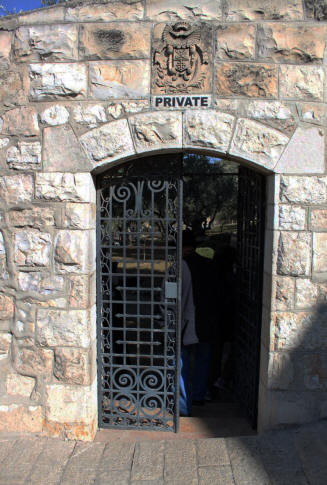
Everyone settles down inside the garden while our tour guide, Pamela, tells us about the garden
To see the Garden of Gethsemane Video 1 - Private Garden - CLICK HERE To see the Garden of Gethsemane Video 2 - Private Garden - CLICK HERE
To learn more about olive treesAfter Pamela finishes telling us about the garden, we were able to walk around the garden and pray
To walk through the Garden of Gethsemane with me - Private Garden - CLICK HERE
Paul & Susan stroll through the garden
Curtis poses with one of the older trees
Joyce spends some time in prayer
Olives are collected from the trees
The Garden of Gethsemane
& The Church of All Nations
We left the smaller private olive garden and headed across the street to the older garden. Entrance to the older garden and the Church of All Nations
Arab vendors sell postcards, bookmarks and much moreThe olive trees in the garden are much larger, thicker and more gnarled
To see the larger trees in the older garden - CLICK HERE
The Church of All Nations is a Roman Catholic church located on the Mount of Olives in Jerusalem
next to the Garden of Gethsemane.The Church of All Nations beside of the Garden of Gethsemane on the Mount of Olives
The Eastern Gate
The Eastern Gate, also called the Golden Gate in much Christian literature, is the oldest of the current gates in Jerusalem's Old City Walls. The gate is located in the middle of the eastern side of the Temple Mount. The portal in this position is believed to have been used for ritual purposes in Biblical times. In Jewish tradition, this is the gate through which the Messiah will enter Jerusalem. Ottoman Sultan Suleiman I sealed off the Gate in 1541 to prevent the Messiah's entrance. The Muslims also built a cemetery in front of the gate, in the belief that the precursor to the Messiah, Elijah, would not be able to pass through the Gate and thus the Messiah would not come.
Photos from the Kidron Valley (Above) This was one of my favorite photos from the trip To see the video of the Eastern Gate - CLICK HERE
Heading to the bus from the Garden of Gethsemane Gid stops for a Coke Arab vendorss display their goods 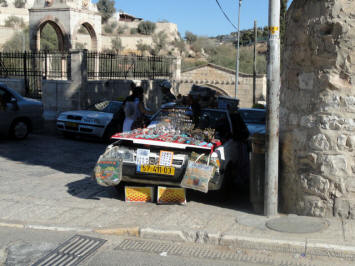
The Mount of Olives is a mountain ridge in East Jerusalem with three peaks running from north to south. The mount has been used as a Jewish cemetery for over 3,000 years and holds approximately 150,000 graves.
From Biblical times until today, Jews have been buried on the Mount of Olives. The necropolis on the southern ridge, the location of the modern village of Silwan, was the burial place of the city's most important citizens in the period of the Biblical kings. There are an estimated 150,000 graves on the Mount, including tombs traditionally associated with Zechariah and Abshalom. On the upper slope, the traditional Tomb of the Prophets Haggai, Zechariah and Malachi is situated. During the Islamization of Jerusalem under Jordanian occupation from 1948 to 1967, Jewish burials were halted, massive vandalism took place, and 40,000 of the 50,000 graves were desecrated. King Hussein permitted the construction of the Intercontinental Hotel at the summit of the Mount of Olives together with a road that cut through the cemetery which destroyed hundreds of Jewish graves, some from the First Temple Period. After the Six-Day War, restoration work began, and the cemetery was re-opened for burials.
Stones are placed on top of cemetery markers when visiting a grave
Roman soldiers from the 10th Legion camped on the Mount during the Siege of Jerusalem in the year 70 CE. The religious ceremony marking the start of a new month was held on the Mount of Olives in the days of the Second Temple. After the destruction of the Temple, Jews celebrated the festival of Sukkot on the Mount of Olive.
The sacred character of the mount is alluded to in Ezekiel (11:23): "And the glory of the Lord went up from the midst of the city, and stood upon the mountain which is on the east side of the city." According to the Old Testament, Solomon built altars to the gods of his wives on the southern peak (I Kings 11:7–8). During the reign of King Josiah, the mount was called the Mount of Corruption (II Kings 23:13). The Mount of Olives is frequently mentioned in the New Testament (Matthew 21:1;26:30, etc.) as the route from Jerusalem to Bethany and the place where Yeshua stood when he wept over Jerusalem. Yeshua is said to have spent time on the mount, teaching and prophesying to his disciples (Matthew 24–25) and also coming there on the night of his betrayal (Matthew 26:39). At the foot of the Mount of Olives lies the Garden of Gethsemane. The New Testament, tells how Yeshua and his friends sang together – "When they had sung the hymn, they went out to the Mount of Olives" Matthew 26:30. Yeshua ascended to heaven from the Mount of Olives as recorded in the book of Acts 1:9–12.
The Mount of Olives is the place that Messiah Yeshua will first stand when he returns to Earth. Zechariah 14:4 further states that the mountain will split in two, with one half shifting north and one half shifting south. "On that day his feet will stand on the Mount of Olives, east of Jerusalem, and the Mount of Olives will be split in two from east to west, forming a great valley, with half of the mountain moving north and half moving south"
Standing on the Mount of Olives looking toward the Old City
The Southern Steps from the Mount of Olives
The Dome of the Rock and the Eastern Gate
The 2011 Israel Tour Group
(Top Row) Pamela Chris, Danny, Doug, Jeff
(2nd Row) Paul, Joyce, Curtis, Lynda, Gloria, Doug, Chuck, Duke
(Bottom Row) Susan, Rita, Melissa, Carolyn, Brittany, Cathy, Myrl, Janice
(Kneeling) EytanJoyce, Danny, Chris & Cathy
Photos of the Eastern Gate from atop the Mount of Olives Carolyn & Curtis Susan & Paul 
To see the Old City and the Eastern Gate Video from the Mount of Olives - CLICK HERE Before we left the Mount of Olives, an Arab vendor boarded to bus selling colorful scarves 
The Church of Saint Peter in Gallicantu is a Roman Catholic church located on the eastern slope of Mount Zion, just outside the Old City of Jerusalem in Israel. The church takes its name from the Latin word "Gallicantu", meaning "cock-crow". This is in commemoration of Peter's triple rejection of Jesus "... before the cock crows thrice." Mark 14:30.
A Byzantine shrine dedicated to Peter's repentance was erected on this spot in 457 AD, but was destroyed by the Fatimid caliph in 1010. The chapel was rebuilt by Crusaders in 1102 and given its present name. After the fall of Jerusalem, the church again fell into ruin and was not rebuilt until 1931. Today a golden rooster protrudes prominently from the sanctuary roof in honor of its biblical connection. This spot is also believed to be the location of the High Priest Caiaphas' palace. Going up from the Pool of Shiloah to Mount Zion one would come across the House of the Priest Caiaphas.
St. Peter Gallicantu Pamela tells the group about the Biblical and historical importance of the site A statue commemorates Peter's denial of knowing Yeshua Duke & Myrl in front of the statue - with the Mount of Olives in the background On the north side of the church is an ancient staircase that leads down towards the Kidron Valley. The staircase was a passage from the upper city to the lower city during the first temple period and would have been the path Yeshua walked down to Gethsemane the night of his arrest.
The Ancient Road - located to the left of the state of Peter
After the Supper, Jesus left the Upper Room with His disciples
and crossed the Kidron Valley

Jesus was arrested and taken to Caiaphas the High Priest
On the lower level there is a succession of caves and ruins from the Second Temple period. Since tradition places the palace of Caiaphas on this site, many believe that Jesus may have been imprisoned in one of these underground crypts after his arrest.
Ancient ruins on the site
Our visit to St. Peter Gallicantu ended at the Belvedere -
a wonderful panoramic view of the Mt. of Olives and much of the Kidron Valley.Looking toward the southern part of the Old City
Looking toward the Mount of Olives
An Arab village
Leaving the panoramic view area
Touring Around Jerusalem & The Old City
After we left St. Peter Gallicantu, we headed into the Old City for lunch To see a map of the Old City - CLICK HERE (Left) Damascus Gate offers quick access to the Christian and Moslem Quarters
(Right) Herod's Gate offers access to the Moslem Quarter
Dung Gate provides quick access to the Jewish Quarter and the Western Wall The Southern Wall of the Temple Mount Going through Dung Gate, you see this view of the Southern Wall
Part of the Mount of Olives (upper right) with the large Jewish cemetery
We were finally able to go to the Western Wall and pray
The Men's Court is on the left - The Women's Court is on the right
The two sections are divided by a short wallPamela took us into the Moslem Quarter for lunch
A variety of stores fill the Old City - we shopped in the Jewish, Christian & Armenian Quarters
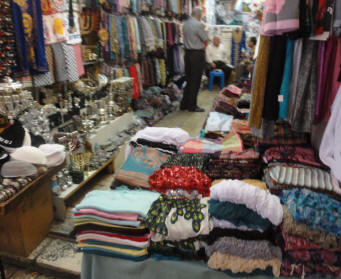
Moslem men sit together smoking a hookah (or waterpipe)
We stopped for lunch - and yes, you guessed it - falafel or shawarma
Israeli food will definitely be missed now that we're back home
Simchat Torah, "Rejoicing with/of the Torah," is a celebration marking the conclusion of the annual cycle of public Torah readings, and the beginning of a new cycle. Simchat Torah is a component of the Biblical Jewish holiday of Shemini Atzeret ("Eighth Day of Assembly"), which follows immediately after the festival of Sukkot in the month of Tishrei (mid-September to early October on the Gregorian calendar. During Simchat Torah, all the synagogue's Torah scrolls are removed from the ark and are carried around the sanctuary seven times. Frequently the dancing and singing with the Torah continues for a long period of time and may overflow from the synagogue onto the streets will continue late into the evening.
As we left the Arab restaurant, we were surprised to see Jewish Men & children carrying
the Torah, singing and dancing up the street in the Moslem Quarter during Simchat Torah
Simchat Torah Video - CLICK HERE
The group exits through the Jaffa Gate
David's Citadel, or the Tower of David, is an ancient citadel (fortress for protecting a town) located near the Jaffa Gate entrance to the Old City of Jerusalem. Built to strengthen a strategically weak point in the Old City's defenses, the citadel that stands today was constructed during the 2nd century BC and subsequently destroyed and rebuilt by, in succession, the Christian, Muslim, Mamluk, and Ottoman conquerors of Jerusalem. It contains important archaeological finds dating back 2,700 years, and is a popular venue for benefit events, craft shows, concerts, and sound-and-light performances. Walking toward David's Citadel
To see the Video of David's Citadel - CLICK HERE
Our next stop on the tour was the Jerusalem Prayer Center. The Jerusalem Prayer Center building, constructed in 1890, was part of the American Colony in Jerusalem from around 1900 to 1930. From 1930 to 1948 it served as the Swedish Consulate and the home of the Larsson family. Baptists purchased the building in 1969 and over the past 40+ years this beautiful stone building has housed a university student ministry center, a New Testament Study Center, a Youth With A Mission base and various other ministries. In August of 2008, the Prayer Center began to receive visitors.
Located at 35 Nablus Road (Derech Shechem), the JPC is positioned on the dividing line between Arab East Jerusalem and Jewish West Jerusalem. This location places it on a strategic site to facilitate prayer for all peoples of the Holy Land and beyond.
The Jerusalem Prayer Center and Prayer Gardens The central feature of the Jerusalem Prayer Center is The Upper Room, an interactive prayer room designed for meeting with God on a personal level. The three sections of the room - Praise, Confession, Intercession - lead you from a recognition of the greatness and love of God through a time of personal introspection and confession, to a place of intercession for God's harvest in "Jerusalem, Judea, Samaria and to the ends of the earth."
The Upper Room 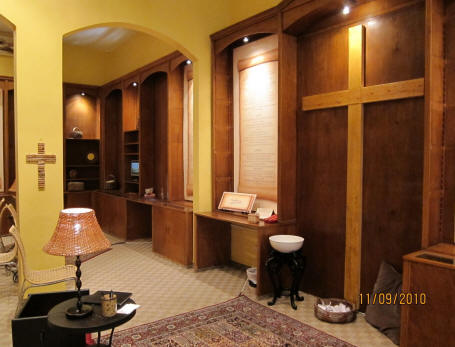
Located on the ground floor of the Jerusalem Prayer Center is the Prayer Chapel. The chapel offers a beautiful space for group worship and study. The central focus of the chapel is the "Harvest" mural by Israeli artist (and our tour guide) Pamela Seran. The mural features the "Seven Species" of Deuteronomy 8:8 and the words of Jesus in Matthew 9:37-38. The seven native species in Israel are wheat, barley, grapes, olives, dates, figs and pomegranates.
The Prayer Chapel mural Jim & Linda met us at the Jerusalem Prayer Center as we were leaving
and spent the rest of the day with us
The Garden Tomb (also known as Gordon's Calvary), located in Jerusalem, outside the city walls and close to the Damascus Gate and within walking distance of the Jerusalem Prayer Center. The Garden Tomb is a rock-cut tomb from the first century and considered by some to be the site of the burial and resurrection of Yeshua, and to be adjacent to Golgotha (Skull Hill).
Walking down one of the garden paths toward Skull Hill 
Our guide at the Garden Tomb (left) tells us the significance of the location To see the Skull Hill Video 1 - CLICK HERE To see the Skull Hill Video 2 - CLICK HERE Standing at the Garden Tomb site
Looking toward Skull Hill with the Arab bus station below the hillSkull Hill - Notice the two eyes and nose in the rocks on the right side of the photo A closer view of Skull Hill To see the Skull Hill Video 3 - CLICK HERE To the TOMB To see the Garden Tomb Video 1 - CLICK HERE To see the Garden Tomb Video 2 - CLICK HERE 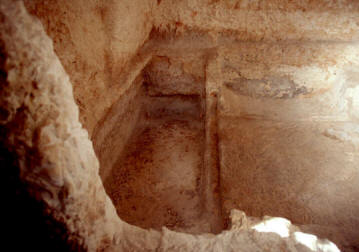
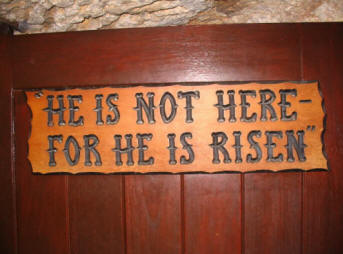
To see the Garden Tomb Video 3 - CLICK HERE
To see the Garden Tomb Video 4 - CLICK HERE
The First Century Winepress
We moved to a quiet section of the garden for a time of praise, worship & communion
Gid lead us in praise and worship
To see Gid leading praise & worship - CLICK HERE Doug shares with us and leads us in communion
After dinner at the hotel the decision was made to walk down to the Old City and spend some time at the Western Wall - and enjoy Simchat Torah there. Jim and Linda had eaten dinner with us and agreed to walk with us and show us the way. The walk was about 30 minutes and the Old City was beautiful after dark. All building in Jerusalem have to be covered with Jerusalem Stone. As the sun begins to go down it's easy to see why it's called "Jerusalem of Gold".
David's Citadel The ruins on Cardo Street The Temple Institute's Temple Menorah on display in the Jewish Quarter The Hurva Synagogue, "The Ruin Synagogue", is a historic synagogue located in the Jewish Quarter of the Old City of Jerusalem. The synagogue was founded in the early 18th century but it was destroyed by Muslims a few years later in 1721. The plot lay in ruins for over 140 years and became known as the Ruin, or Hurva. In 1864, the Perushim rebuilt the synagogue and it became Jerusalem's main Ashkenazic synagogue, until it too was reduced to rubble by the Arab Legion during the 1948 Arab–Israeli War. After Israel conquered Jerusalem in 1967, a number of plans were submitted for the design of a new building. After years of deliberation and indecision, a commemorative arch was erected instead at the site in 1977, itself becoming a prominent landmark of the Jewish Quarter. The plan to rebuild the synagogue in its 19th-century style received approval by the Israeli Government in 2000, and the newly rebuilt synagogue was dedicated on March 15, 2010.
The Hurva Synagogue
It was an interesting experience to be at the Western Wall after dark - and also toward the end of Simchat Torah. There were numerous groups there with their Torah scrolls - dancing and singing.
The men's section at the Western Wall There are at least 7 Torah scrolls in this small group of men To see the Western Wall Simchat Torah Video 1 - CLICK HERE To see the Western Wall Simchat Torah Video 2 - CLICK HERE To see the Western Wall Simchat Torah Video 3 - CLICK HERE Men praying at the wall A second group of men sing and dance while carrying the Torah - including Doug To see Doug dancing with this group of men - CLICK HERE The men from our group
Chuck, Duke, Gid, Jeff, Curtis, Danny, Doug, Paul ...... and Jim Torah Arch inside the men's section of Wilson's Arch Walking back to the Prima Kings Hotel we passed through the Mamila Mall just outside of the Jaffa Gate. There on display, was a model of the Arc of the Covenant. When you're in Israel and you see the Ark of the Covenant, you have to stop and get a photo. Ark of the Covenant
More Photos and Information From the 2011 Sukkot Trip
Day 2 - 13 Oct 2011 Day 3 - 14 Oct 2011 Day 4 - 15 Oct 2011 Day 5 - 16 Oct 2011 Day 6 - 17 Oct 2011 Day 7 - 18 Oct 2011 Day 8 - 19 Oct 2011 Day 9 - 20 Oct 2011 Day 10 - 21 Oct 2011 Day 11 - 22 Oct 2011 Day 12 - 23 Oct 2011




